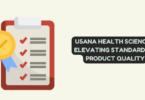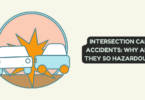
Ultimate Guide to SERP Intent: What You Need to Know
Serp intent, or Search Engine Result Page Intent, is not just a buzzword but a pivotal aspect of SEO strategy. It goes beyond keywords and rankings, delving into the heart of user behavior and search engine algorithms. In this guide, you will unravel the intricacies of SERP Intent, providing you with the insights and strategies needed to elevate your online presence.
SERP Features and Intent
SERP Features, or Search Engine Result Page Features, are search engine results page elements beyond organic listings. Here are some common SERP features and how they relate to user intent:
Featured Snippets
Imagine you’re looking for a quick answer – that’s what featured snippets do. They give you a quick answer at the top of the search results, like a sneak peek. When you ask questions, Google might show a box with the direct answer. It’s a handy way to get information fast without clicking on a website.
Knowledge Graphs
Knowledge graphs are like an online encyclopedia that you can find in search results. When you search for something, especially well-known people, places, or things, it’s a quick way to gather essential information without visiting multiple websites.
Local Pack and Maps
Imagine you’re craving pizza – searching for “pizza near me” might show a map with local pizza places. The local pack appears with a list of nearby options, complete with reviews and contact details.
Video Carousels
When you search for something, especially if it’s related to videos, Google might showcase a row of video suggestions at the top. It’s an easy way to preview and select your desired video without scrolling through multiple pages.
Image Results
When you search for something, especially if it’s related to pictures, Google might show a grid of images right on the results page. It’s an efficient way to explore and find what you want without clicking on different websites.
Shopping Features
Shopping features provide a convenient way to compare products, read reviews, and make purchase decisions from the search results page. Whether you’re exploring “best headphones” or “stylish dresses,” the features streamline your online shopping experience, bringing the market to your fingertips.
Implementing SERP Intent in SEO Strategy
If you want your content optimized for user satisfaction and search engine visibility, you need to include SERP intent in your SEO strategy. Here’s a breakdown of how to implement SERP intent in your SEO strategy:
1. Identifying Intent-Driven Keywords
To get your SEO strategy off the ground, it is important to find keywords that are driven by intent. These are keywords that match what people are looking for online. First, figure out what the searcher is trying to do—find information, find their way around, or make a purchase. Platforms like Google Analytics can help you decide how people use your content and what search terms they use most often.
2. Tools and Techniques for Research
Having the right tools and knowledge makes the research process go more quickly. To find relevant keywords and figure out how often people search for them, use keyword research tools like SEMrush or Ahrefs.
Also, use competitor analysis tools to look closely at your competitors’ plans to find possible keywords and holes in your strategy.
3. Crafting User-Centric and Valuable Content
Once you have found intent-driven keywords, write content that users will want to read. Focus on user-centricity by providing valuable, informative, and engaging material. For added clarity, ensure your content fits the purpose you identified. Break down complex information into digestible segments, ensuring accessibility for a diverse audience.
4. Enhancing Website Navigation
User experience plays a pivotal role in SEO. To do that, improve your website’s navigation so users can easily find their way around your content. Remember, menus should be simple, page load times optimized, and mobile responsive. A well-organized website structure not only aids users in finding information effortlessly but also contributes positively to search engine rankings.
Apply SERP Intent Strategies Today
In conclusion, incorporating SERP intent strategies into your SEO efforts is essential for staying competitive in today’s digital landscape. So, don’t wait any longer. Take action today and apply SERP intent strategies to optimize your online presence and elevate your business to new heights.






